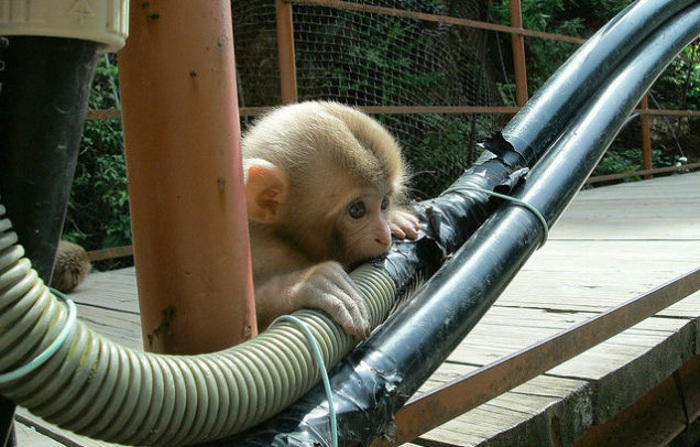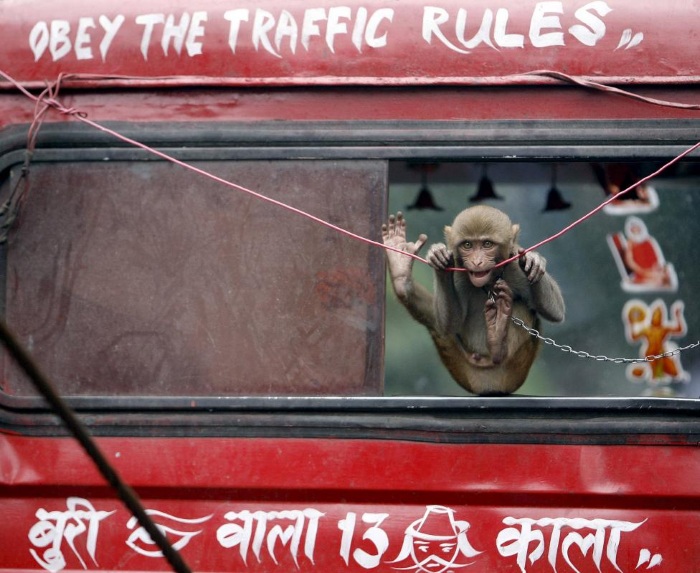As India begins to launch its $18 billion plan to bring technological convenience to its numerous provinces, it’s facing plenty of hurdles, most of which are tied directly to the underdevelopment of various parts of its countryside — specifically electricity shortages, poorly designed cities, and monkeys.

The 3,000-year-old holy city of Varanasi presents the most complete case study for all the issues India is facing right now. You see, many devout Hindus come to die here with the belief that doing so in this specific location will give them salvation.
It is here, too, that hundreds of macaque monkeys live in the city’s temples, where they are fed and worshipped by the locals.
India is in the process of trying to bring the world’s information revolution to Varanasis. Unfortunately, the city’s monkeys have belabored the completion of this project, as they are chewing on and eating parts of the system’s fiber-optic cables, which are strung along the banks of the Ganges River.
“We cannot move the temples from here. We cannot modify anything here, everything is built up. The monkeys, they destroy all the wires and eat all the wires,” said communications engineer A.P. Srivastava. He goes on to explain that his team had to replace the riverside cables less than two months after they were installed due to the damage caused by the monkeys feasting on it.

Srivastava said that his team is looking into alternatives, but that it’s a tough go so far. Chasing away / trapping the cable-hungry monkeys very much angers the local residents and temple-goers. Also, Varanasi is a physically small city home to some 2 million people. Such a dense population makes it all but impossible to lay the cables underground.
What’s more, a shortage of electricity in the area is complicating India’s efforts to set up stable Wi-Fi in public places; this headache is particularly pronounced during the summer months, when daily power cuts (due to the excessive use of cooling instruments like fans, air conditioners, etc.) by the country can last for hours at a time.
The local government is not ready to give up just yet. Varanasi is part of the parliamentary constituency of Prime Ministry Narendra Modi, a Hindu nationalist leader. When he came into his position last year, some of the promises he made included the laying of 434,960 miles of broadband cable to connect India’s 250,000 village clusters within three years, build 100 new “smart cities” by 2020, and shift more public services, like education and health, to improve access and accountability.
Varanasi was specifically selected as the first of what was eventually 2,500 locations singled out by the government to be set up with street-level Wi-Fi, so failing it would set a poor precedent for the other 2,499 spots.
Beyond setting a good example and seeing the project through to completion in this particular location, the prospects associated with the success of this campaign, as a whole, are quite promising: the country’s experts predict this broadband initiative, coupled with the surge in smartphone ownership being seen of late, will mean that close to a third of Indians could have access by 2017. That’s up from what’s estimated to be about 20% (250 million people) right now.
Also, expanding Internet connectivity and making access less expensive could add up to 1.6 percentage points (about $70 billion) to India’s GDP over a four-year period.
So, while the monkeys (and other issues) are proving to be a bit of a headache at the moment, the government and contractors have plenty of reason to remain committed to this project through to its completion.
Via Reuters
Advertisement
Learn more about Electronic Products Magazine





